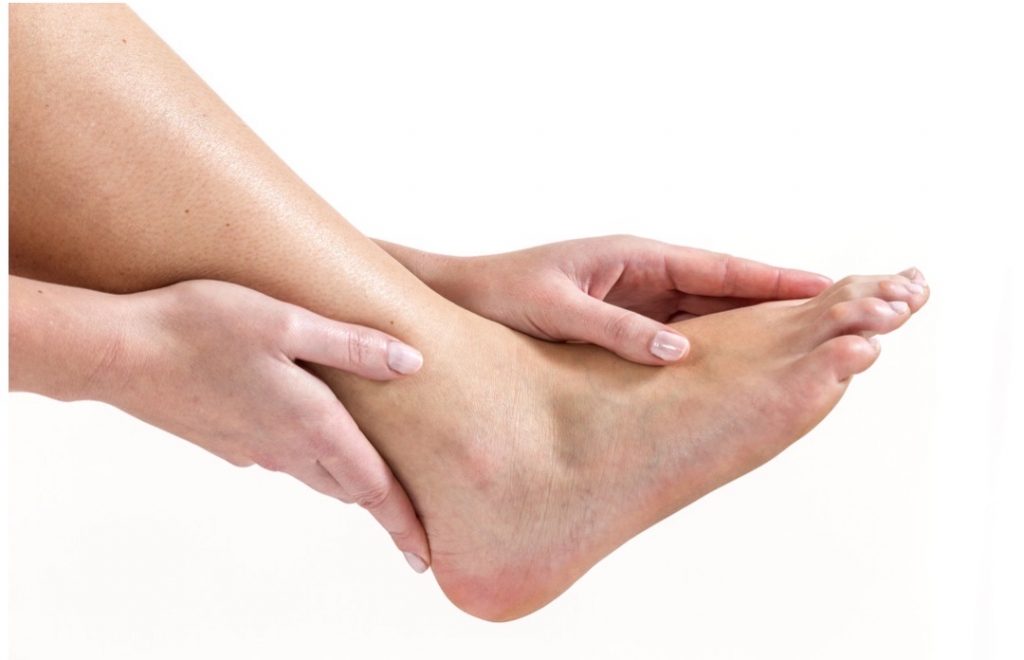High Ankle Sprain Doctor Monmouth County NJ
Your ankles have multiple ligaments holding the foot together and helping your joints work properly. When these ligaments are injured, that injury can cause a sprain. High ankle sprains are a rare kind of sprain, most often resulting from certain sports and activities. Read on to learn more about high ankle sprain symptoms and treatment.
What Is a High Ankle Sprain?

Ligaments are fibrous bands of connective tissue. You have over 900 spread throughout your body. Ligaments hold your bones in place, stabilize your joints and muscles, and support your internal organs. They help prevent your organs from being damaged, your joints from twisting, and your bones from dislocating.
A sprain occurs when a ligament has been stretched beyond its usual limit or torn. Sprains have three levels of severity:
- Grade 1 sprains: Ligaments are stretched but not torn.
- Grade 2 sprains: Ligaments are partially torn.
- Grade 3 sprains: Ligaments are completely torn.
High ankle sprains occur when you stretch or tear the ligaments in your upper ankle.
High ankle ligaments. Your ankles are complex joints and include many different ligaments that hold your lower leg bones and the bones in your feet together.
The ligaments that could be damaged by a high ankle sprain include the:
- Anterior inferior tibiofibular ligament: This is the ligament that stretches in front of the tibia and fibula bones.
- Interosseus membrane: This ligament sits in the space between the tibia and fibula and acts as a stabilizer.
- Posterior inferior tibiofibular ligament: This is the ligament that extends behind the tibia and fibula.
High Ankle Sprain vs Low Ankle Sprain
The primary difference between a high ankle sprain and a low ankle sprain is the location of the injured ligament.
The ligaments of your ankle are divided into three groups. These are the:
- Lateral ligaments: The lateral ligaments are the lower ligaments on the outside of the ankle. They start at the medial malleolus (the bone at the end of your tibia that forms the bump on the outside of your ankle) and extend to the ankle bone, heel bone, and the bones on the top of the foot. A sprain of the lateral ligaments is called an inversion ankle sprain.
- Medial ligaments: Also called the deltoid ligaments, these are the ligaments on the inside of your ankle. They start at the lateral malleolus, the end of your fibula, and the bump on your inner ankle, connecting to your ankle and heel bones. A sprain of these ligaments is called an eversion ankle sprain.
- Syndesmotic ligaments: These are the ligaments that surround the tibia and fibula. A high ankle sprain may also be referred to as a syndesmotic injury because it affects these ligaments.
The most common type of sprain is a sprain of the lateral ligaments. This is called an inversion ankle sprain, which occurs when your ankle rolls inward. One reason inversion ankle sprains are more common is that your lateral ligaments are the weakest in your ankle. Eversion ankle sprains, in contrast, are less common and occur when your ankle rolls outward, often when you’re running or jumping.
High Ankle Sprain Causes
High ankle sprains occur when your foot is flexed upward and the ankle is twisted. They usually only occur due to a strong application of force or an extreme twist. Because of this, high ankle sprains are rare and typically only affect athletes, especially those in sports like basketball, football, hockey, skiing, and soccer.
High Ankle Sprain Symptoms
The specific symptoms you experience will depend on the severity of your injury, but the most common symptoms of a sprain include pain and swelling. Other symptoms may include:
- Bruising
- Difficulty bearing weight on the injured leg
- Difficulty walking (especially on your toes)
- Tenderness
Depending on the severity of your injury, you may not be able to bear weight or walk at all on the injured leg.
High Ankle Sprain Diagnosis
When you meet with your medical provider, they’ll gather information about your medical history and have you explain how you injured your ankle. After this, they’ll conduct a physical examination to determine the primary location of your pain. A physical exam may include:
- An external rotation test: During the external rotation test, you’ll sit with your knee bent at a 90-degree angle. Your doctor will gently twist your foot to the outside and note the intensity and location of your pain.
- A squeeze test: During the squeeze test, your doctor will squeeze your tibia and fibula together to put pressure on the interosseous membrane. Pain from this test usually indicates a high ankle sprain.
- For confirmation or to check the severity of your injury, your doctor may order an imaging test.
- The most useful test for a high ankle sprain is a magnetic resonance imaging test, or an MRI. An MRI uses a large magnet and computer-generated radio waves to create images of tissues inside the body.
- X-rays.X-rays use waves of radiation to produce images. Materials that are dense, like bone, don’t absorb as much radiation as less-tense materials, like organs, and this allows bones to show up white on an X-ray. Your doctor can use an X-ray to check that the bones are still in place after your ligament injury. They may also use an X-ray to make sure that none of your ankle bones are damaged.
- A CT scan, which uses X-rays to take 360-degree images of your body, may also be ordered to give your doctor a more complete picture of your injuries.
Have Questions? Contact us here to schedule an appointment or fill form below:
